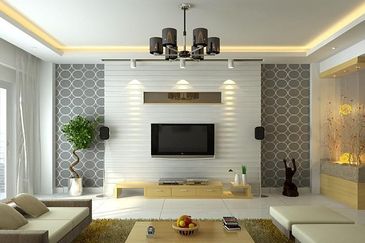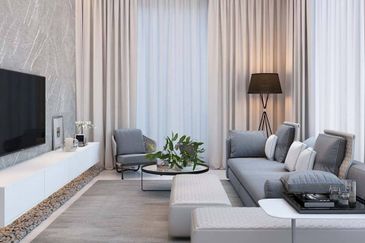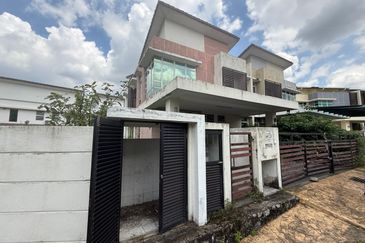
How far has Kuala Lumpur city progressed when it comes to creating a sustainable built environment? Not too bad, it seems.
World Green Building Council chairperson Tai Lee Siang believes KL’s green building standards are moving towards the levels of first-tier Asian cities.
“If we are saying that Singapore and most of the Japanese cities and Hang Zhou in China are sitting at the top range of Asian cities that have mature green built environments, then KL should be at a high position on the second tier,” Tai told TheEdgeProperty.com in an interview on the sidelines of the World Sustainable Built Environment Conference 2017 held in Hong Kong from June 5 to 7.
Tai estimated about 10% of Asian cities have established mature green built environments and about 30% of Asian cities are still working towards the target, while the rest (60%) have not seen significant action in building green yet.
He defined cities with mature green built environments as those that have green features and concepts in place even as the city continues with its upgrading and enhancement process.
“Although the public transportation system and infrastructure in KL started later than Singapore, we have seen KL [environment and liveability level] improve a lot in the last 20 years. The infrastructure is being put in place and it has better road planning today, or else the traffic could be worse,” Tai commented.
Describing KL as unique in its push towards a greener built environment, he said: “Every city and country has its own unique approach. For KL, its strength is its strong ground-up enterprises that are capable of developing massive green and sustainable township projects.
“It is very different from Singapore, which has extreme top-down control [by the government] to turn the whole place into a singular model.
“Malaysia is very diverse. Malaysian cities can have more sustainable township developments to form micro cities that hopefully, when they merge, will bring positive change and influence to the surrounding older parts of the city and eventually make the entire city a greener place.”
Increased awareness
Generally, Tai said, the organisation has witnessed the improvement in global environmental awareness and knowledge.
“On a scale of one to 10, we are [globally] at the level of two to three compared with 20 years ago when it was just one.”
It may not seem like much but according to Tai, the improvement is significant and is achieved via constant communication and campaigns. “It is also with the help of the media in portraying issues of climate change,” he added.
Globally, cities and governments now have a high level of awareness of the importance of green building and the need to reduce our carbon footprints. Tai cited Dubai, one of the biggest oil producers in the world but has been very supportive in the production of renewable energy as well.
“This shows that the country knows what is right to preserve the environment for the future,” Tai said.
He also noted that the focus today is not just on green buildings but also on green cities. “In the past, we only looked at one building at a time, as a standalone entity. Today, the challenge is more complex because people are not just living in the building, but within a city,” he added.
Engaging the developers to get them to adopt green and environmental-friendly building concepts took some time as questions like cost and demand have to be answered.
“The market has proven that developing a green building does not cost that much and the end-users have begun to recognise the value,” he explained. “Now, it is time to build greener cities, not just buildings.”
He stressed that green cities are not built overnight as both the hardware and people’s mindsets have to change.
“A city is made up of buildings and people. Even if a city has green buildings, if the mindsets and lifestyles are not green-oriented, a green city can be reduced to a grey city,” Tai said.
He cited London as an example. “London is the classic example in promoting sustainable lifestyle. The government is sending the message: ‘We provide the public transportation for your everyday transit. If you still want to use the road, then cycle’. So they are making the already narrow roads less favourable to vehicles,” he shared.
Tai concluded that changing the people’s lifestyle is now the main focus of green city advocates. “We have to relate the green concept to the people. This is the main focus moving forward — to let the people know that green buildings provide a happier and healthier environment for them,” Tai said.
Towards that goal, the use of data is very important in convincing the end-users. “We engaged with researches that have come up with fairly conclusive data that green building improves health and productivity.”
One such research was on “Building the Business Case: Health, Well-being and Productivity in Green Offices”, published in October 2016. The report listed eight features that will make offices healthier and greener. Such data can be very convincing as it affects the end-users.
Tai also pointed out that the Asian region is crucial to the success of green cities worldwide.
“Asia is unique because we have a larger population than the rest of the world. We have seen more mega cities as well as environment problems in Asia over the past 20 years.
“But Asia is blessed by two things — its population and strong economic base. I believe if Asia can get it right, it can be the model for the world in developing sustainable cities and buildings,” Tai concluded.
Here are eight features that make healthier, greener offices:
1. Indoor air quality and ventilation
Healthy offices have low concentrations of CO2, VOCs (volatile organic compounds) and other pollutants, as well as high ventilation rates.
There is a 101% increase in cognitive scores for workers in a green, well-ventilated office.
2. Thermal comfort
Healthy offices have a comfortable temperature range which staff can control.
There is a 6% fall in staff performance when offices are too hot and 4% if too cold.
3. Daylighting and lighting
Healthy offices have generous access to daylight and self-controlled electrical lighting.
It gives on average 46 minutes more sleep for workers in offices near windows.
4. Noise and acoustics
Healthy offices use materials that reduce noise and provide quiet spaces to work.
There is a 66% fall in staff performance as a result of distracting noise.
5. Interior layout and active design
Healthy offices have a diverse array of workspaces, with ample meeting rooms, quiet zones, and stand-sit desks, promoting active movement within offices.
Flexible working helps staff feel more in control of their workload and engenders loyalty.
6. Biophilia and views
Healthy offices have a wide variety of plant species inside and out as well as views of nature from workspaces.
There is around 7% to 12% improvement in processing time at one call centre when staff has a view of nature.
7. Look and feel
Healthy offices have colours, textures, and materials that are welcoming, calming and evoke nature.
Visual appeal is a major factor in workplace satisfaction.
8. Location and access to amenities
Healthy offices have access to public transport, safe bike routes, parking and showers, and a range of health food choices.
Around €27 million is saved through cutting absenteeism as a result of Dutch cycle-to-work scheme.
This story first appeared in TheEdgeProperty.com pullout on July 14, 2017. Download TheEdgeProperty.com pullout here for free.
TOP PICKS BY EDGEPROP

Suadamai, Bandar Tun Hussein Onn
Cheras, Selangor

The Clover Homes @ Laman Semanggi
Semenyih, Selangor

Ridgefield Residences @ Tropicana Heights Kajang
Kajang, Selangor

LAST 4 bedroom Condo Monthly 1.8k get at Kota Kemuning!
Kota Kemuning, Selangor

Kota Kemuning [LIMITED CONDO Besar 4 Bilik] Monthly 1.7k Dapat!
Kota Kemuning, Selangor

KOTA KEMUNING NEW LAUNCH BIG CONDO 4 ROOMS! Monthly 1.7k only!
Kota Kemuning, Selangor

MUST VISIT NEW CONDO NEAR KOTA KEMUNING! Monthly 1.7k Get 4 room Big Condo!
Kota Kemuning, Selangor

Shah Alam NEW LAUNCH Resort Concept 4 bed Sky condo!
Kota Kemuning, Selangor

KOTA KEMUNING NEW LAUNCH CONDO 4R3B [Monthly from 1.7k!]
Kota Kemuning, Selangor

Seksyen 25, Shah Alam (Taman Sri Muda)
Shah Alam, Selangor

hero.jpg?GPem8xdIFjEDnmfAHjnS.4wbzvW8BrWw)













